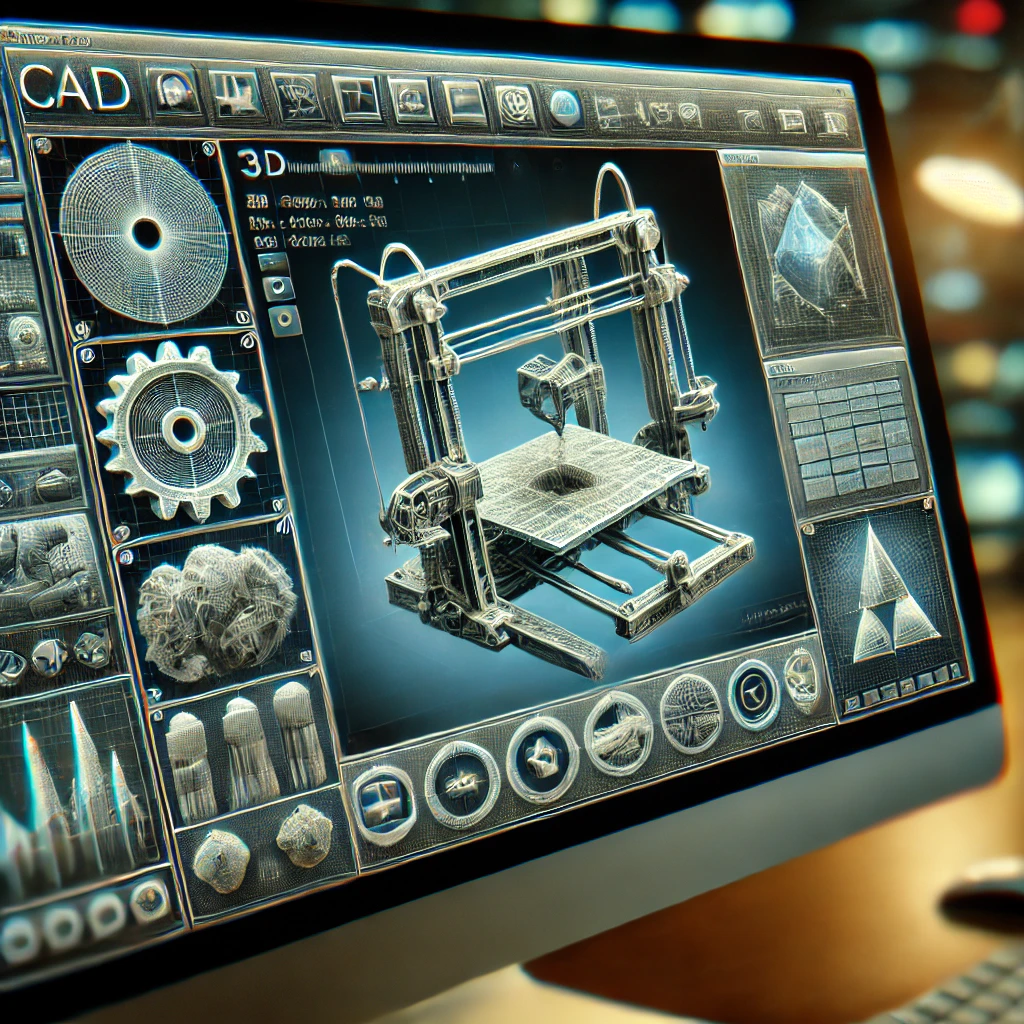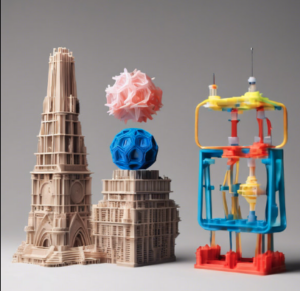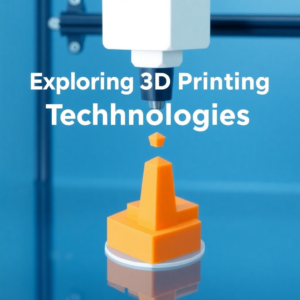Top 3D Printing Software: The Best Tools for Your Projects

3D printing has become a groundbreaking technology in fields ranging from engineering and design to education and healthcare. Whether you’re crafting prototypes, creating artistic models, or printing mechanical components, selecting the right 3D printing software can make or break your project. With so many options available, it can be overwhelming to determine which software best fits your needs.
This article delves into the top 3D printing software of 2024, providing a detailed breakdown of the features, pros, and cons of each tool. Whether you’re a seasoned professional or just starting in the world of 3D printing, this guide will help you choose the best software to ensure your projects are successful.
Why Choosing the Right 3D Printing Software Matters
3D printing is a multifaceted process, and the software you use is at the heart of it all. The software allows you to design, optimize, and export models that are ready for printing. It also influences the final quality of your printed objects, and some software is more suited for specific tasks or user expertise.
- Software for Beginners vs. Professionals: While beginner-friendly software like TinkerCAD is great for those starting their journey, advanced users will require more sophisticated tools like Fusion 360 or Blender, which offer extensive modeling, simulation, and rendering capabilities.
- Compatibility with Your Printer: It’s also essential to ensure the software you choose is compatible with your specific 3D printer. Some printers require certain software for their features to work correctly, while others support multiple platforms.
- Project Type: The kind of project you plan to create will also guide your software choice. For instance, creating highly detailed, artistic models might require different software than if you’re designing mechanical parts or prototypes.
Top 3D Printing Software in 2024
1. Fusion 360
Overview and Key Features
Fusion 360 is a powerful, cloud-based software developed by Autodesk, designed for 3D modeling, CAD, CAM, and CAE. It is highly versatile, making it suitable for a wide range of 3D printing projects. Whether you’re creating complex mechanical designs or simple prototypes, Fusion 360’s integrated platform helps streamline the entire process.
- Parametric Design: Fusion 360 enables precise control over your design process. The parametric design approach allows users to set constraints and dimensions that automatically adjust as changes are made.
- Cloud-Based Collaboration: As a cloud-based platform, Fusion 360 supports real-time collaboration among teams, which is perfect for projects that require input from multiple stakeholders.
- Advanced Simulation: It includes simulation features that help users predict how their designs will perform in real-world conditions. This is particularly beneficial for engineers and designers working on functional parts.
Pros and Cons
-
Pros:
- Free for students, startups, and educators, which makes it an excellent choice for beginners and those on a budget.
- Cloud-based collaboration for easy team access and real-time feedback.
- Powerful tools for both 3D modeling and simulation.
-
Cons:
- Steeper learning curve for new users.
- May require powerful hardware, especially when working on large designs or simulations.
Best For
Fusion 360 is ideal for engineers, industrial designers, and anyone creating functional products that require high precision. It’s also suitable for anyone looking to collaborate on a design in real-time.
2. Blender
Overview and Key Features
Blender is an open-source, free software that is a favorite among artists and hobbyists, known for its powerful 3D modeling capabilities. Originally designed for animation, Blender has evolved into a comprehensive 3D creation suite. It’s especially well-suited for artistic designs, game modeling, and visual effects.
- Advanced Mesh Editing: Blender’s mesh editing tools provide users with exceptional control over model creation. It allows for intricate design details, perfect for complex and artistic 3D models.
- Rendering and Animation: With its built-in Cycles and Eevee render engines, Blender enables photorealistic rendering, perfect for those creating high-quality visual representations of their models. It’s also a go-to software for animation and character design.
- Customizability: Being open-source, Blender is highly customizable, allowing users to adjust the interface, add new features, and integrate plugins.
Pros and Cons
-
Pros:
- Completely free, with a strong online community offering tutorials and support.
- Highly customizable and flexible for various projects.
- Strong rendering capabilities, making it great for detailed visual work.
-
Cons:
- Steep learning curve, particularly for beginners.
- Overwhelming interface for those who only need basic 3D printing functions.
Best For
Blender is best for artists, animators, and game developers. It’s perfect for those looking to create intricate models or detailed visual representations of their designs.
3. TinkerCAD
Overview and Key Features
TinkerCAD is a web-based 3D design tool that is perfect for beginners. It was created by Autodesk and is incredibly easy to use, offering a drag-and-drop interface that enables users to build 3D models without needing previous experience in CAD software.
- Simple Interface: TinkerCAD’s intuitive interface makes it one of the easiest 3D design tools to learn. Users can quickly start creating basic models using simple geometric shapes.
- Education-Focused: TinkerCAD is widely used in classrooms, and its simplicity makes it an excellent tool for introducing 3D printing concepts to students and educators.
- Quick Prototyping: Due to its straightforward nature, TinkerCAD is great for quickly building prototypes that can be 3D printed without having to go through a complex design process.
Pros and Cons
-
Pros:
- Free and accessible online, with no need to download software.
- Ideal for beginners, hobbyists, and educators.
- Quick learning curve for new users.
-
Cons:
- Limited advanced features for users who need detailed or professional-level designs.
- Lack of support for complex mesh editing and parametric design.
Best For
TinkerCAD is perfect for beginners, students, and hobbyists. If you’re just starting out with 3D printing or teaching others, TinkerCAD provides the simplest way to learn and create 3D designs.
How to Choose the Right 3D Printing Software
Selecting the ideal 3D printing software for your needs depends on several factors:
- Ease of Use: If you’re a beginner or just starting with 3D printing, ease of use is a major consideration. Software like TinkerCAD or even Blender (with some basic tutorials) can offer an easier learning experience.
- Project Type: Are you working on mechanical parts, intricate art, or educational models? Choose software like Fusion 360 for engineering designs, Blender for artistic models, or TinkerCAD for simple designs.
- Budget: There are both free and paid options. TinkerCAD and Blender are excellent free alternatives, while Fusion 360 offers a free version for non-commercial users. More advanced or commercial software may require a subscription or one-time payment.
- Printer Compatibility: Ensure that the software you choose is compatible with your 3D printer. Many 3D printers come with proprietary software, but most software options can export standard file types like STL or OBJ.
Best Practices for Using 3D Printing Software
To make the most of your 3D printing software, here are some tips:
- Start with Simple Designs: If you’re a beginner, start with basic projects to familiarize yourself with the software and 3D printing process.
- Test Your Designs: Before committing to a large print, it’s always a good idea to test your design with smaller prototypes to ensure it functions as expected.
- Optimize Your Models: Pay attention to design details that may impact printability, such as overhangs and structural support. Most 3D printing software offers tools to optimize models for printing.
Comparing the Top 3D Printing Software Options
Here’s a quick comparison of the three 3D printing software options:
| Feature | Fusion 360 | Blender | TinkerCAD |
|---|---|---|---|
| Target Audience | Engineers, Designers | Artists, Animators | Beginners, Students |
| Ease of Use | Intermediate | Advanced | Easy |
| Best For | Mechanical Design | Artistic Models | Basic Prototyping |
| Cost | Free for Students | Free | Free |
| Key Features | Parametric Design, CAM | Mesh Editing, Animation | Simple 3D Design |
The Future of 3D Printing Software
As we look toward the future, 3D printing software will continue to evolve with technological advances. Key trends to watch include:
- AI-Powered Design: Artificial intelligence may help automate design processes and optimize models for 3D printing.
- Better Simulation: As simulation software improves, designers will have even more powerful tools to predict how their designs will behave under real-world conditions.
- Integration with Other Tools: 3D printing software will likely integrate more seamlessly with other tools used in manufacturing, design, and animation workflows.
Choosing the right 3D printing software can significantly impact the success of your project. Whether you’re a beginner looking for simplicity or an experienced designer needing advanced features, the software options in 2024 offer powerful tools to suit your needs. Fusion 360, Blender, and TinkerCAD are all excellent choices, but the best one for you will depend on your specific requirements.
With this guide, you can make an informed decision about which 3D printing software will best serve your creative and professional goals. Start exploring and take your 3D printing projects to new heights in 2024!




